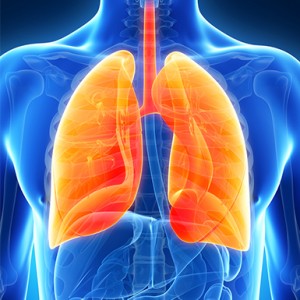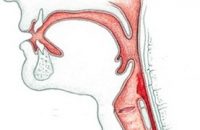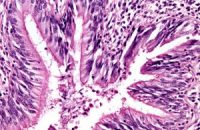Chronic Bronchitis: Definition, Symptoms and Treatment
 Chronic bronchitis is an inflammatory disease of bronchial tubes which is followed by phlegm allocation and constant cough within 2 and more years. Pulmonologists suggest dividing chronic bronchitis which symptoms meet at 3-8% of adult population, into 2 forms:
Chronic bronchitis is an inflammatory disease of bronchial tubes which is followed by phlegm allocation and constant cough within 2 and more years. Pulmonologists suggest dividing chronic bronchitis which symptoms meet at 3-8% of adult population, into 2 forms:
- primary;
- secondary.
At primary bronchitis in the patient, the diffusion disorder of bronchial tree which isn’t connected with other inflammatory processes proceeding in man’s body is observed. The secondary type of bronchitis is caused by chronic pulmonary diseases, nasal diseases, maxillary sinus cavity, chronic renal failure, serious cardiac illnesses and some other diseases.
Symptoms
Symptoms of chronic bronchitis are:
- constant cough for two and more years in a row. It is followed by a plentiful phlegm and amplifies in the morning;
- feeling of weakness;
- fatigue;
- chest pain;
- the speeded-up breath;
- dry rattles;
- short breathing;
- fast fatigue at physical activities.
The air entering the lungs of the healthy person is almost sterile as it is cleared of all harmful impurity due to the nasal filtering ability, the micro eyelashes covering a mucous membrane of bronchial tubes, and coughing reflex. Nevertheless, in some cases bacteria, after all, get into our organism, passing all protective barriers. Thus they cause damages which are followed by inflammatory processes, cough and the strengthened slime production. If pathogenic factors affect an organism during a long period, the person has chronic bronchitis. Treatment is directed on the elimination of illness’s causes as which most often act: a tobacco smoke, dust and air pollution on production, any bacterial infections. The disease develops slowly, but covers all surface of bronchial tubes walls, causing their narrowing and other irreversible deformations. In the absence of timely and adequate treatment, the disease progresses and, eventually, passes into chronic obstructive bronchitis. The long bronchial tree irritation and, as a result, violation of normal lungs ventilation is the cornerstone of it. The timely treatment may be conducted with My Canadian Pharmacy remedies.
Treatment
About what treatment of chronic bronchitis is effective, we will tell slightly below but now we concentrate on standard medicamentous methods. Generally, disposal of bronchitis is reduced to normalization of respiratory function and reduction of extent influence of risk factors. In particular, doctors have to take measures for secretion reduction, take care of phlegm discharge, to appoint adequate antibacterial therapy. It is also necessary to follow certain rules thanks to which the disease and all its forms, for example, chronic obstructive bronchitis are treated in the shortest time and don’t give to patients any inconvenience anymore. Among the main rules we would like to note the next moments:
- the serious relation to the disease and understanding of that it can lead to very serious consequences;
- therapy has to consider specific features of an organism on which its volume and intensity depend;
- treatment is carried out in a complex as separate actions won’t give considerable relief to the patient;
- national treatment of chronic bronchitis should be discussed with the attending physician previously.
As for medicamentous means, chronic bronchitis, which treatment assumes use of the most different preparations, is, mainly, carrying out with complex actions. Bronchodilators which reduce the degree of unpleasant symptoms expressiveness are the cornerstone of symptomatic treatment and are applied as preventive measures. The exacerbation of chronic bronchitis demands to carry out inhalation therapy and use of nebulizers which increase preparations absorption in airways and efficiency of their action. Owing to features of pharmacokinetics as inhalers anticholinergics are usually applied.







